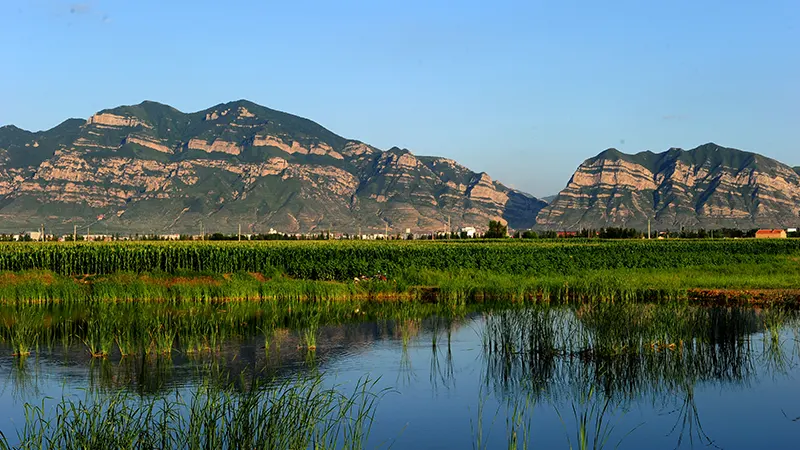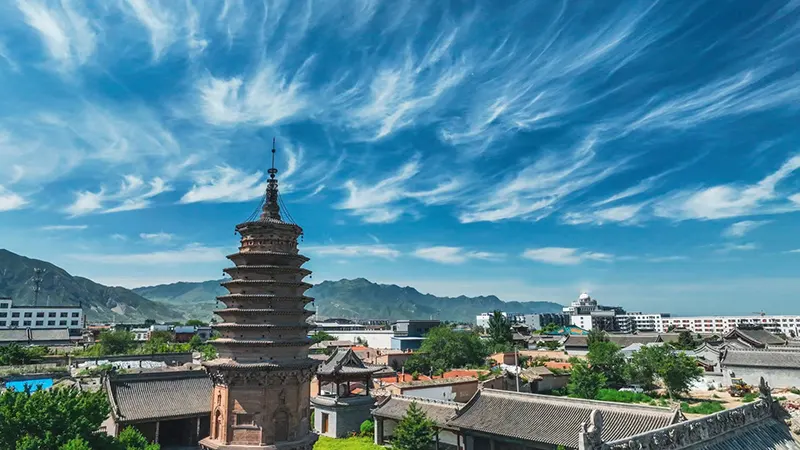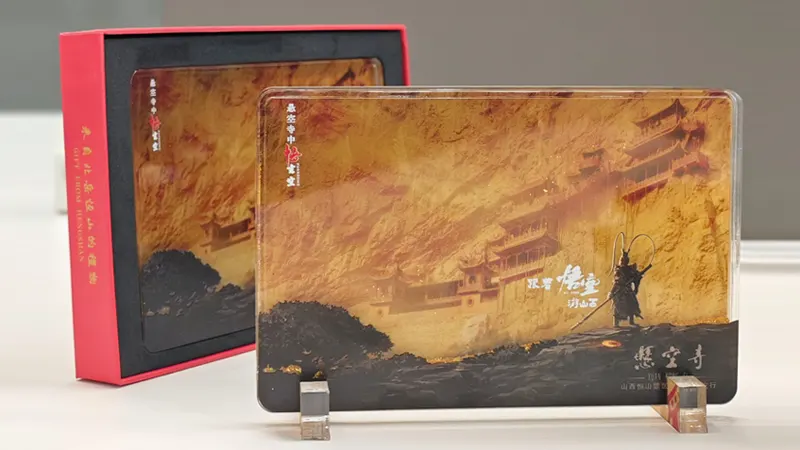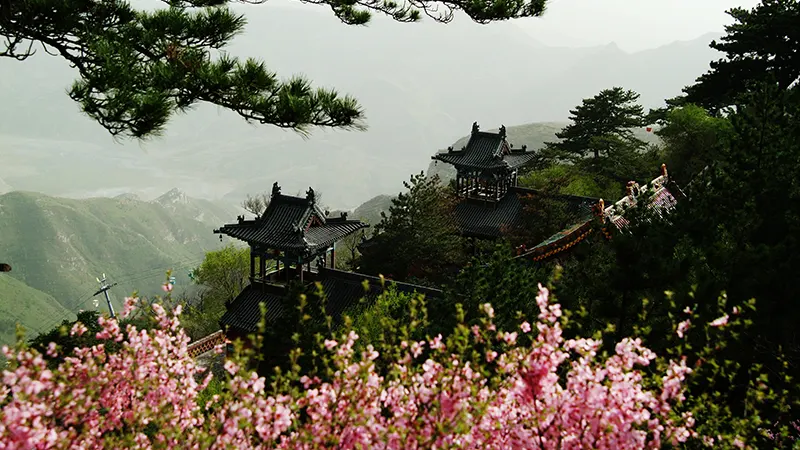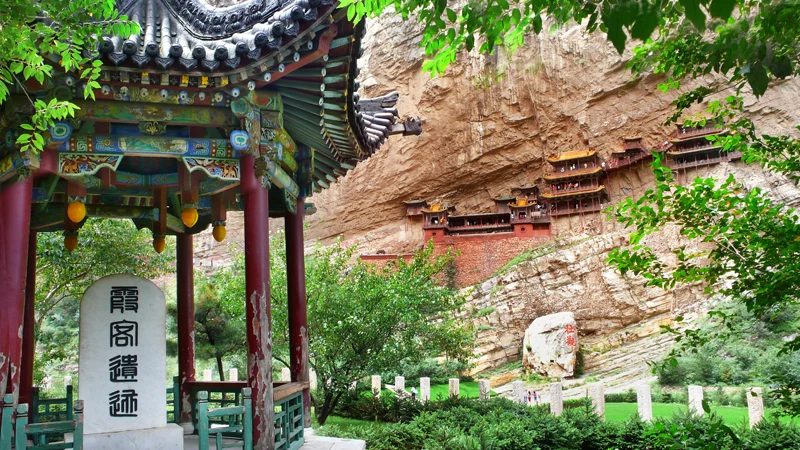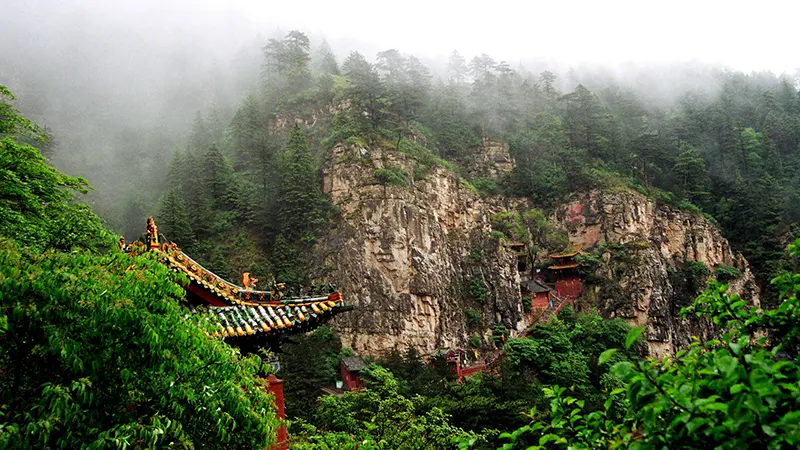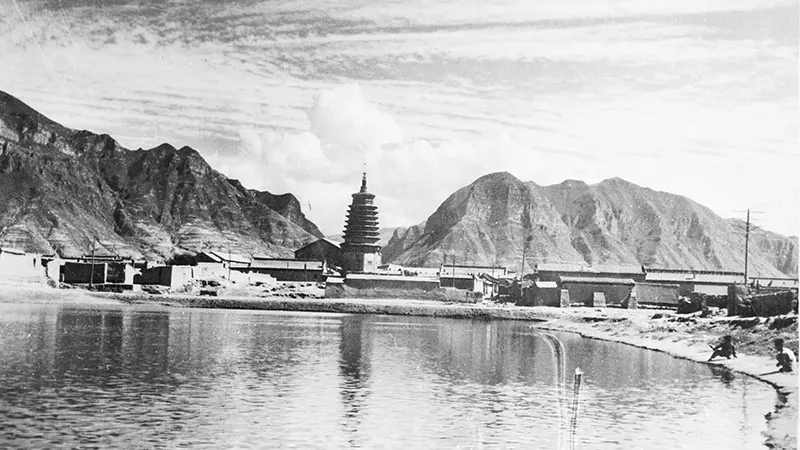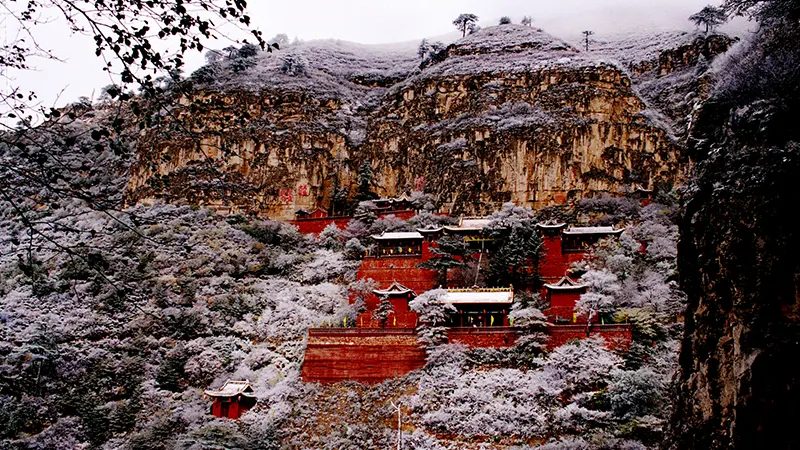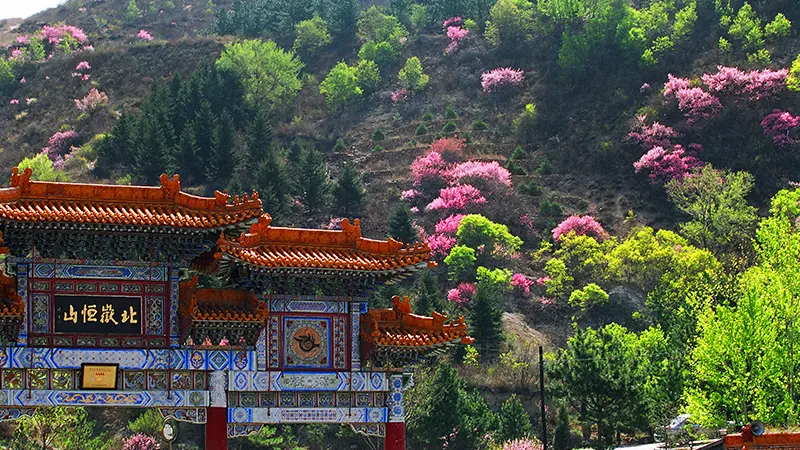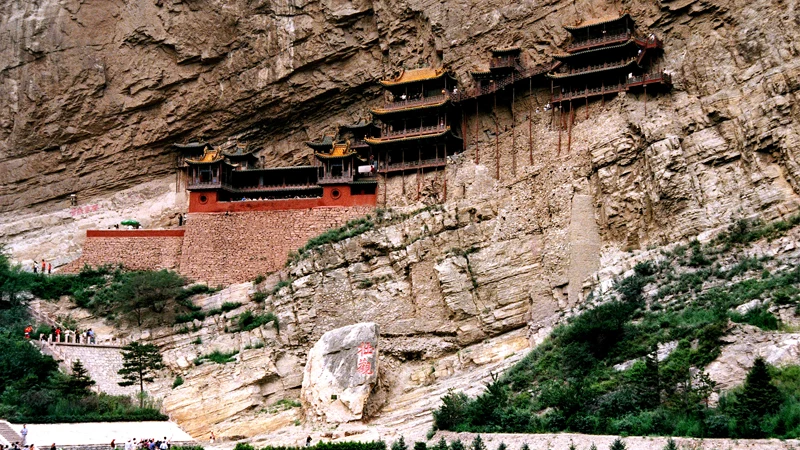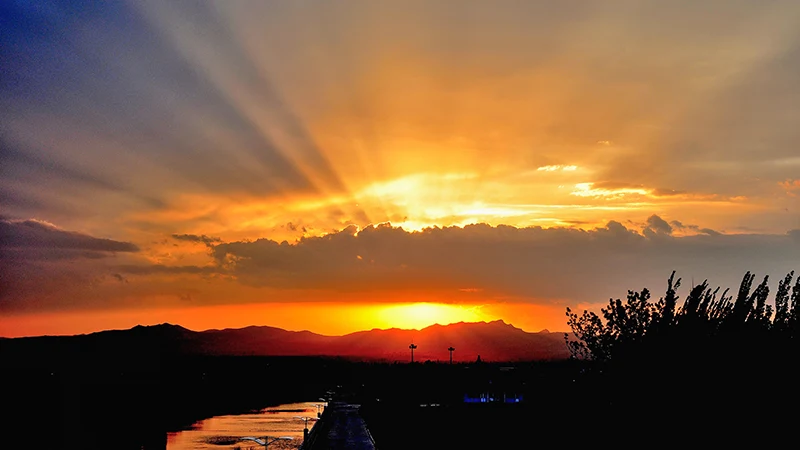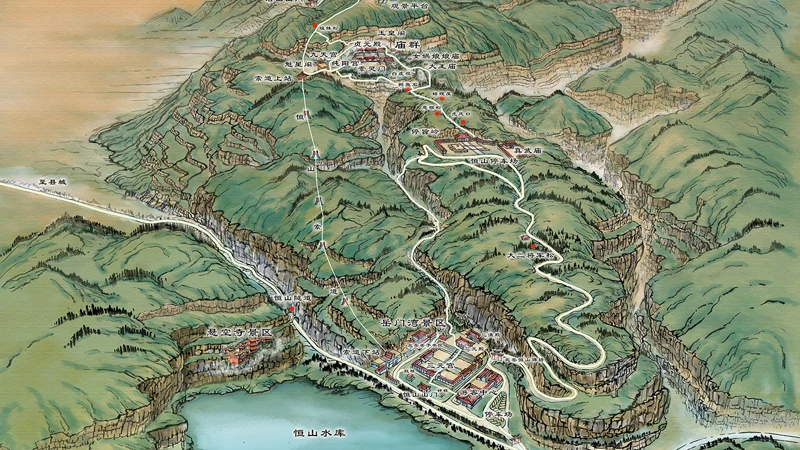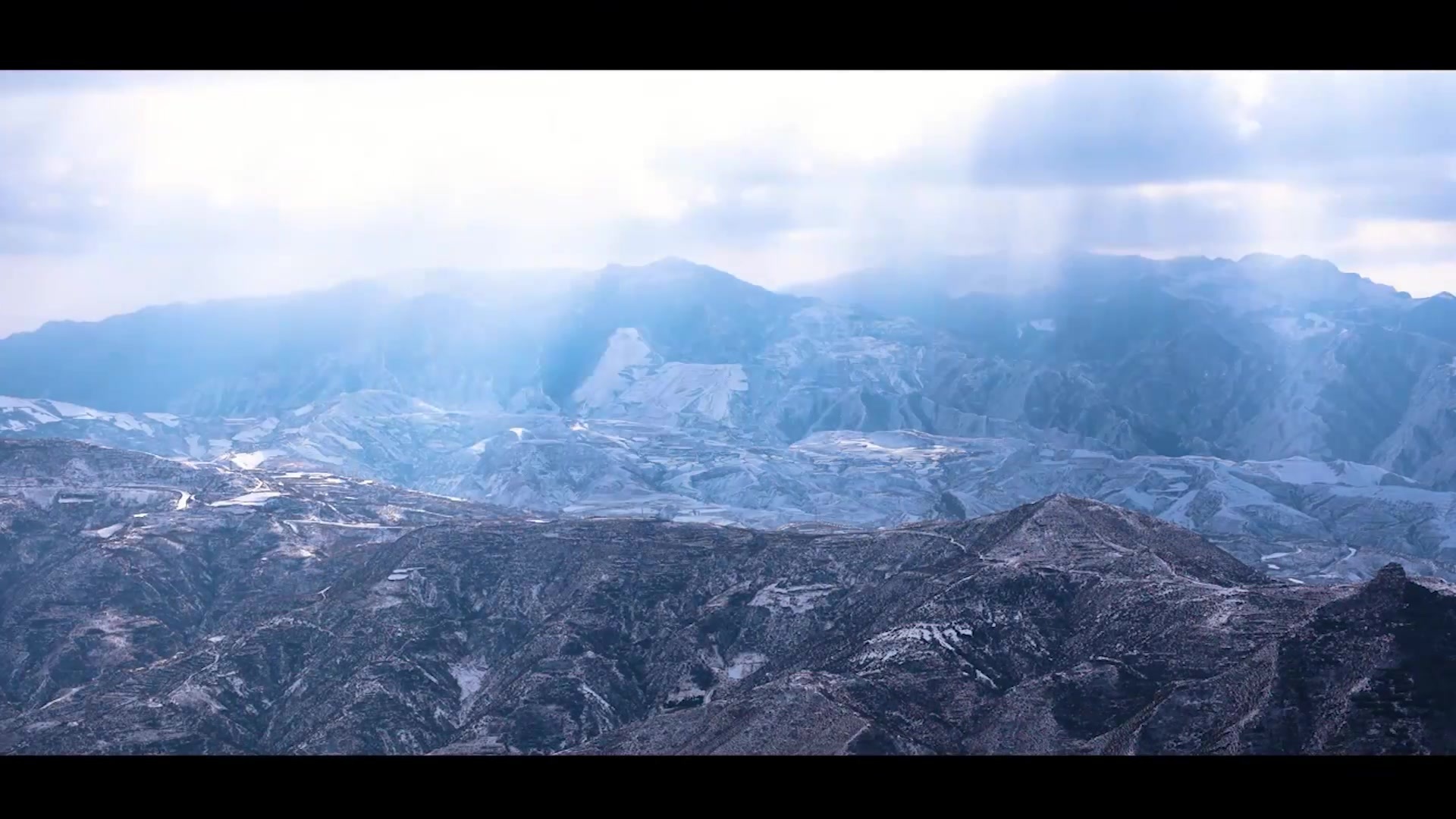Must-visit destinations in Shanxi Province for China Tourism Day
Publish Time:
2025-03-14 16:17
Source:
May 19th marks the 12th China Tourism Day. This year's theme is "Appreciate Chinese Culture, Enjoy a Wonderful Journey." On this day, Hengshan Mountain temple complex, Hanging Temple, and Yong'an Temple within the city offered half-price discounts to domestic and international tourists.
May 19th marks the 12th China Tourism Day. This year's theme is "Appreciate Chinese Culture, Enjoy a Wonderful Journey." On this day, Hengshan Mountain temple complex, Hanging Temple, and Yong'an Temple in the city offered half-price discounts to domestic and international tourists.
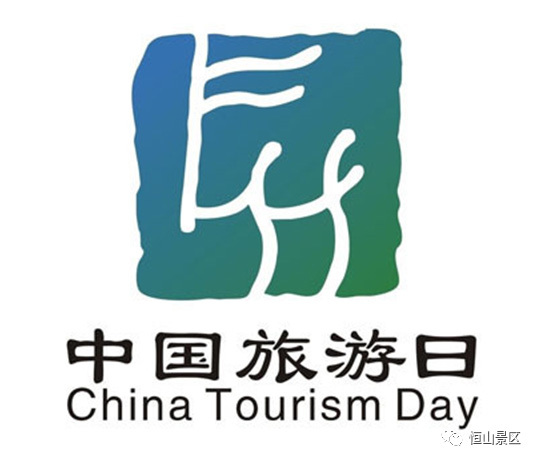
We know that China Tourism Day originates from the starting date of "Travels of Xu Xiake", May 19th. As early as March 30, 2011, the State Council's executive meeting passed a resolution to designate May 19th of each year as "China Tourism Day", starting from 2011. The purpose of establishing "China Tourism Day" is to strengthen tourism publicity, cultivate national tourism and leisure awareness, encourage the public to participate widely in tourism activities, improve the quality of life, and promote the development of the tourism industry.
Xu Xiake has a deep connection with Hengshan Mountain. This great traveler, praised as a "remarkable person throughout the ages," gave a wonderful description of Hengshan Mountain with his masterful writing. His visit to Hengshan Mountain in the sixth year of Chongzhen's reign (1633) was even 27 years earlier than the relocation of the Northern Mountain to Hunyuan in the 17th year of Shunzhi's reign (1660). Xu Xiake's "Record of Travels to Hengshan Mountain" is included in middle school textbooks, and the Hanging Temple even has a Xiake Pavilion with stone carvings inscribed by him. Hengshan Mountain is undoubtedly the first choice and must-visit destination in Shanxi for China Tourism Day.

The origin of China Tourism Day: Xu Xiake is the most important and prominent element.
As early as the end of the last century, some people, inspired by World Tourism Day, proposed the establishment of a "China Tourism Day".
On May 19, 2001, Ma Shaoqin, a resident of Ninghai, Zhejiang Province, issued a proposal for the establishment of "China Tourism Day" in the name of the Ninghai Xu Xiake Tourism Club: "As China moves from a large tourism resource country to a world tourism power, it should have its own tourism commemorative day. We propose that the opening day of "Travels of Xu Xiake" (May 19th) be named "China Tourism Day" to commemorate Xu Xiake forever and inspire the people of the whole country to strive towards becoming a world tourism power."
Since May 19, 2002, Ninghai County, Zhejiang Province, has held an annual "Xu Xiake's Travel Festival".
In 2007 and 2008, representatives from 12 cities in 7 provinces and regions including Zhejiang, Anhui, Fujian, Jiangxi, Hunan, Guangxi, and Yunnan jointly signed the "Xu Xiake Tourism Belt" Tourism Cooperation Declaration at the Xu Xiake Tourism Belt Cooperation Summit, jointly calling for the determination of May 19th, the opening day of "Travels of Xu Xiake", as "China Tourism Day".
On March 17, 2008, the Zhejiang Provincial Tourism Bureau wrote to the National Tourism Administration, requesting that May 19th be designated as "China Tourism Day".
On June 16, 2008, the National Tourism Administration convened a symposium on "China Tourism Day" in Beijing, bringing together leading officials from relevant departments in Zhejiang and Jiangsu provinces, leaders of the Ninghai County Tourism Bureau, and a number of experts and scholars. At the meeting, most experts believed that using May 19th, the opening day of "Travels of Xu Xiake", or the third Sunday of May as "China Tourism Day" would be more appropriate. They stated that choosing May 19th for China Tourism Day not only reflects Xu Xiake's high status but also takes into account China's vast territory and the significant climate differences between the north and south. May 19th is a golden season for traveling, regardless of whether it is east, west, south, north, or central China.
On February 12, 2009, Zhejiang Province held a tourism development conference, and the National Tourism Administration and Zhejiang Province signed a memorandum of understanding on a close cooperation mechanism, which mentioned that the National Tourism Administration supports the designation of May 19th, the opening day of "Travels of Xu Xiake", as "China Tourism Day".
On December 1, 2009, the State Council issued "Opinions on Accelerating the Development of the Tourism Industry", which proposed the establishment of a "China Tourism Day". On December 4, 2009, the National Tourism Administration officially launched the work related to establishing "China Tourism Day". After soliciting date proposals nationwide, many regions submitted applications.
In December 2009, the "China Tourism Day Solicitation and Planning Special Working Committee" of the National Tourism Administration authorized Sina.com to conduct a special survey on the establishment date of "China Tourism Day".
On March 30, 2011, the State Council's executive meeting passed a resolution, and China officially established National Tourism Day, with the date set as May 19th.
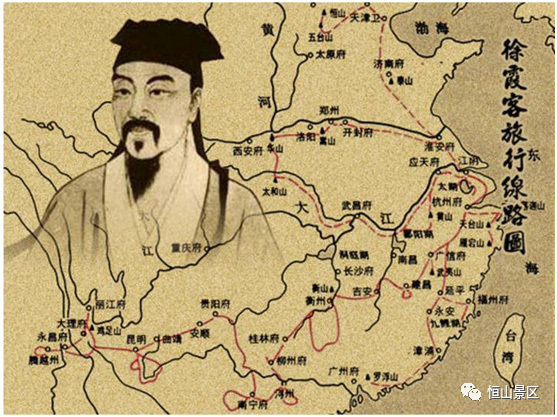
"Like green trees looking at white clouds": Xu Xiake visited Shanxi's Hengshan Mountain with a devout heart.
Shanxi civilization has always been admired by Xu Xiake, the geographer and great traveler. Touring and investigating Hengshan Mountain was an indispensable part of Xu Xiake's plan to tour the Five Great Mountains in his youth. However, at the age of 40, having already explored most of China's rivers and mountains, Xu Xiake had not yet set foot on Hengshan Mountain in Shanxi, which he regretted. He said to his friend Wang Siren: "What I regret is that I have not yet set foot on Mount Heng in Hunyuan and the thousands of bamboo shoots in Guilin."
Xu Xiake was born in the fourteenth year of Wanli's reign of the Ming Dynasty (1586). Later generations divided Xu Xiake's travel career into three stages: the first stage was the preparation stage before the age of 28, focusing on studying China's geographical and cultural heritage and traveling to places such as Taihu Lake and Mount Tai based on interest, without leaving travel records. The second stage was the first part of his travels from age 28 (1613) to 48 (1633), lasting 20 years, touring famous mountains such as Zhejiang, Fujian, Mount Huangshan and the northern Songshan, Wutai, Huashan, and Hengshan mountains. However, he only wrote one volume of travel records, accounting for about one-tenth of the whole book. The third stage was the latter part of his travels from age 51 (1636) to 54 (1639), lasting 4 years, touring the large mountains and rivers of southern China such as Zhejiang, Jiangsu, Huguang, and Yunnan. He wrote nine volumes of travel records.
In early July of the sixth year of Chongzhen's reign of the Ming Dynasty (1633), 48-year-old Xu Xiake finally set off from his hometown of Jiangyin and traveled north to fulfill his long-held wish. At that time, 26 years had passed since his first trip in 1607, and 20 years had passed since he wrote his first work in 1613. According to later generations' division, this was already the end of his most golden period of traveling across China's mountains and rivers.
On this northern journey, Xu Xiake traveled north from the Grand Canal to the capital, then west to Mount Wutai and Hengshan Mountain, returning to the capital before heading south. On his way north, Xu Xiake visited Xie Depu, then serving as a director of the Imperial Academy, in Nanjing. His joy and anticipation of visiting Hengshan Mountain can be glimpsed in Xie Depu's poem "Autumn Garden Morning Thoughts, Composed for Xu Ruren and Presented to Xu Xiake on His Northern Journey," which includes the line "Now you are going to Hengshan Mountain as planned, it must be like the green trees gazing at the white clouds." From this poem, we can see that Xu Xiake and Xie Depu must have had a very pleasant exchange, and the anticipation of Hengshan Mountain even deeply touched Xie Depu, the listener. The general meaning of the poem is: Now you can finally fulfill your long-held wish to travel to Hengshan Mountain, your joyful mood should be like the green trees on the mountain gazing at the white clouds! It shows that Xu Xiake began his journey to Shanxi with devout and beautiful aspirations.
Xu Xiake's "three-day tour" of Hengshan Mountain is vividly described in his travelogue. Because of his immense admiration for Hengshan Mountain, his travelogue is particularly detailed. The "Diary of a Trip to Hengshan Mountain," a key work and highlight of the latter part of his travelogue, is considered the most mature and brilliant peak of his travel writing.
A Pioneer: "A Record of a Trip to Hengshan Mountain" Included in Middle School Textbooks
Xu Xiake's travels to Hengshan Mountain are even familiar to many Chinese students, because "A Record of a Trip to Hengshan Mountain" was the first selection from "Xu Xiake's Travelogue" to be included in middle school Chinese textbooks. According to my research, this piece was included in the eighth-grade upper semester textbook (Lesson 23) of the Chinese language version as early as 2011, the same year as the establishment of China Tourism Day. In contrast, "A Record of a Trip to Mount Tiantai," another famous work that became associated with China Tourism Day and serves as the opening piece of "Xu Xiake's Travelogue," was only included in the required upper semester of the national ordinary high school Chinese textbook in 2021.
On the eleventh day, the wind and clouds cleared, leaving a clear blue sky. I used my walking stick to ascend the mountain, facing east. The terrain was gentle, without any difficult climbs.
After one li, I turned north. The mountains were all coal, easily accessible without deep mining. Another li, and the soil and rocks turned red. There were gnarled pines standing beside the road, and a pavilion called "Looking at Immortals." After another three li, the cliffs began to rise, with the shadows of pines filtering the sunlight; this is called "Tiger Wind Pass." Then the stone road wound around, beginning to climb the cliffs. Three li further, there was a magnificent archway inscribed "The First Mountain of the North," with official buildings, kitchens, and wells inside. To the right of the archway, there was a staircase leading east. Halfway up the cliff was a sleeping palace, north of which was a cave with flying rocks, and above that was the North Peak Temple. The temple was backed by sheer cliffs and overlooked the official buildings. The temple steps reached to the sky, and steles stood majestically between the temple gates.
Ascending from the right of the temple, there was a stone cave, used as a room, called "Meeting the Immortals Terrace." Inside the terrace were statues of immortals, densely packed. I wanted to climb the dangerous cliffs and reach the summit. Returning past the east of the temple, I saw where the two cliffs broke off, with grass and bushes hanging down for a thousand feet; this was a shortcut to the summit. So I took off my clothes and climbed. After two li, I emerged from the dangerous cliffs, looking up at the summit, which still seemed to be halfway to heaven. But the mountain was covered with dense short trees, thorny and withered bamboo, which could only snag clothes and prick necks; climbing was difficult, and branches broke easily. Despite my efforts, it felt like falling into a raging torrent, unable to escape. I mustered more courage and climbed, and after a long time, the thorns ended, and I finally reached the summit.
The sun was bright and clear. Looking down at the north of the mountain, I saw collapsed cliffs and dense trees. This mountain had bare earth where there were no trees, but the stony mountains had trees. The north side was all stone, so the trees were all on the north side. The city of Hunyuan Prefecture was at the foot of the mountain. Looking north across the mountains, the view was boundless. To the south was Longquan, and to the west was Mount Wutai, both green and majestic. Nearby, the Longshan Mountains stretched west, with their branches extending east, as if shoulder to shoulder, guarding the desert.
Then I descended the west peak and followed the path into the dangerous cliffs of the gorge, looking down at the vast expanse below, I dared not descend. Suddenly, turning my head east, I saw a person swaying above. I climbed up to ask him, and he pointed to the southeast, among the pines and cypresses. I followed his directions and found the path, which was behind the sleeping palace on the top of the dangerous cliff. Soon, I found the path. Going south through the pine and cypress forest, I first looked down from the top and saw the pines and cypresses, green and lush, like garlic leaves and grass stems. But here, they were as thick as a person's embrace and reached the sky. The pines and cypresses at Tiger Wind Pass were not even a hundredth of these. From the gap in the cliff, I descended directly to the right of the sleeping palace, which was the cave with flying rocks.
——From the Middle School Textbook "A Record of a Trip to Hengshan Mountain" (by Xu Xiake)
Compared to the "Diary of a Trip to Hengshan Mountain" in "Xu Xiake's Travelogue," the middle school textbook version of "A Record of a Trip to Hengshan Mountain" is slightly abridged, but the content is more concise and highlights the theme. Overall, it uses multifaceted observations to perfectly describe the entire journey; with keen insight, it vividly depicts the characteristics of various landscapes; the language is concise, vivid, rhythmic, and engaging, making it a truly remarkable classic.
It should be noted that in the "Diary of a Trip to Hengshan Mountain," the author recorded his visit to Longshan Mountain before Hengshan Mountain, which was unexpected. He considered it "a fitting end to the journey to Mount Wutai." Approaching Hengshan Mountain but not yet ascending, he saw the continuous mountain peaks, which were magnificent. Upon entering the Hengshan Mountain Golden Dragon Gorge via the Daodama and Zijin avenues in Datong, he described the towering cliffs, commenting that this gorge "cannot be compared to the Yi Que or the Nine Bends of Wu Yi." His description of the Hanging Temple is: "The multi-storied buildings hang high, the curved pavilions lean sideways, looking like a mirage spitting out multiple platforms," praising it as "a great sight in the world." This shows the author's great appreciation. Once he ascended Hengshan Mountain, he used his pen to the fullest, describing the local products, the soil, rocks, pine shadows, the sleeping palace, the cave with flying rocks, and even the Meeting the Immortals Terrace. To reach the summit, he even took off his clothes and pushed through thorns, bravely climbing upwards, seeing the vast expanse and the smallness of all the other mountains. The joy of reaching the summit is deeply moving, vividly portraying the climber's strenuous efforts, making it unforgettable.

More Than Just Hengshan Mountain: Highlights of Xu Xiake's Itinerary in Hunyuan
This special trip to Shanxi by Xu Xiake was actually a seven-day journey. He first went to Mount Wutai for four days, then came to Hengshan Mountain for three days.
After visiting Mount Wutai, Xu Xiake entered Hunyuan from Fanshi, arriving at Tuling on the ninth day of the month and staying overnight at a house where the residents shared the same surname.
On the tenth day, Xu Xiake continued northward, following the stream from the south. Before reaching Longshan Mountain, he specifically mentioned two place names: "Jianling" and "Longyukou." In present-day Peicun Township, Jian Gan Liang still exists; whether this is the same as "Jianling" requires further confirmation. Regarding Longyukou, Zhang Jun, who served in Peicun Township and later became the director of the county's urban construction bureau, carefully studied Xu Xiake's journey in Hunyuan and believes that present-day Lingyunkou is the Longyukou recorded in Xu Xiake's "Diary of a Journey to Hengshan Mountain" (the two names are homophones). This seems highly probable.
The descriptions of the scenery between "Jianling" and "Longyukou" in the travelogue are particularly captivating; please see:
Climbing mountains and fording streams from Shahe River, winding through valleys, all I encountered were barren hills and desolate mounds; unexpectedly, I suddenly ascended a high dome, yet the southern slope was still low and uneven. Once I crossed the northern slope, I overlooked east and west peaks with connected walls, verdant and red streams. The circling and surrounding forms, all rocks, yet also trees; the color of the rocks is uniform, yet their shapes and textures each vary exquisitely; the color of the trees is varied, yet intertwined together into a gorgeous tapestry. Rocks obtaining the trees are towering and leaning in, adorned with patterns and even more peculiar; trees obtaining the rocks are flat and winding downwards, with towering cliffs and uniquely ancient.
I have not personally visited this beautiful scenery, mainly due to my limited understanding of this section of the landscape and lack of knowledge of exactly what the old man Xiake referred to; in the future, I will definitely pay a visit if I have the chance.
As for the subsequent descriptions of Longshan Mountain, Longshan Dayun Temple, and Jinyong Gorge and Hanging Temple, these were mentioned before and will not be repeated here. However, on the evening of the tenth day, Xu Xiake rested in a "mud house by the gate" at the mountain gate of Hengshan Mountain Temple. At that time, "east of the stream were three gate plaques, towering on a mound, supported by hundreds of stone steps below" and "still ten li from the temple, surrounded by layers of earthen mountains, the peak of the mountain invisible." The gate here should be the original entrance archway to the Hengshan Mountain Sanyuan Palace.
Xu Xiake's travelogue of Hengshan Mountain and the Hanging Temple is undoubtedly paramount, as this was Xu Xiake's long-awaited and anticipated journey to the northern Mount Heng in Hunyuan. For Hengshan Mountain, his travel route is quite clear; except for the ascent to the summit and the descent from the summit, which is too dangerous and rarely used, all other points are relatively easy to determine. The Hanging Temple currently retains the stone inscription "Great View of the World" inscribed by Xu Xiake and has a Xiake Pavilion as a memorial. It can be said that Hengshan Mountain is undoubtedly a must-visit destination for Xu Xiake's Shanxi tourism. Regarding Xu Xiake's "Diary of a Journey to Hengshan Mountain," I had in-depth exchanges with Director Cao Qilong, who had recently taken office at the Hengshan Mountain Scenic Area Management Center. Commissioned by Director Cao, I also conducted preliminary research on Xu Xiake's travel route through Hengshan Mountain. With the vision and efforts of the new leadership, Hengshan Mountain will surely showcase Xu Xiake's route, elements, and charm in a new light.
Developing New Paths: Launching the Application for Xu Xiake's Tourist Route Landmark Sites is Extremely Necessary
On November 25, 2014, the search and certification of Xu Xiake's tourist route landmark sites was launched in Beijing. This initiative aims to promote the excavation and protection of the cultural relics of the Xu Xiake tourist route and, at the same time, to promote the application for World Heritage status of the Xu Xiake tourist route. The first batch of landmark sites was born on May 19, 2015. By 2021, 127 natural and cultural heritage sites in 35 counties and districts across 6 provinces and regions had been confirmed in five batches. These 6 provinces and regions are Zhejiang, Yunnan, Jiangxi, Henan, Fujian and Guangxi; Shanxi is not included.
Here, I do not intend to compare the natural and cultural heritage sites with those of the 6 provinces and regions, nor do I intend to compare the cultural tourism and economic development conditions of different places. However, under the current situation of tourism alliance cooperation and mutual support, especially since Hengshan Mountain has abundant Xu Xiake elements and content, and even has the unparalleled advantage of being the earliest included in middle school textbooks, coupled with our county's recent active promotion of the "whole Hengshan Mountain, panoramic Hunyuan" large-scale cultural tourism development and the acceleration of the creation of the Hengshan Mountain 5A scenic area, it is imperative that Hengshan Mountain launch the application for Xu Xiake's tourist route landmark sites in a timely manner.
The benefits of joining the ranks of Xu Xiake's tourist route landmark sites are easy to understand. Firstly, we can exchange ideas with advanced concepts from other places, allowing our development concepts to achieve "mid-air refueling" and "high-level docking"; secondly, it can expand Hengshan Mountain's circle of friends, and enhance interaction and communication needless to say, the synergistic effect will be magnified exponentially, and it can also foster "connections" and expand opportunities for future accelerated development; thirdly, with the advantages of Hengshan Mountain, after becoming a landmark site, it is possible to enter the first echelon, even the core echelon, and leverage the huge potential of the Xu Xiake tourist route Brand to enhance Hengshan Mountain's reputation and influence in terms of space and breadth; fourthly, the application of the Xu Xiake tourist route for World Heritage status is being actively promoted and receives high attention from all sectors and high levels, regardless of when the application is successful, it can help Hengshan Mountain achieve its dream of "indirect application for World Heritage status" and open up new and greater opportunities for development.
According to our county's full-fledged plan and promotion of the creation of the Hengshan Mountain 5A scenic area, in the future, we will actively restore the original natural ancient river channel of the Hanging Temple, and with the construction of the visitor service center, the Hanging Temple and Hengshan Mountain temple group tourism reception will eventually be "unified." This also includes the highly imaginative and expansive dissemination of Xu Xiake elements: using the Hanging Temple as a gateway, through the reservoir dam to achieve water and land routes to tour Hengshan Mountain, allowing visitors to retrace the path of the old man Xiake when he visited the Hanging Temple and Hengshan Mountain, enhancing the charm and fun of tourism.
Interestingly, the Wutai Mountain and Hengshan Mountain routes taken by Xu Xiake during his travels in Shanxi are similar to the Hengshan Mountain and Wutai Mountain boutique tourism routes that our province has been focusing on promoting for many years. In particular, Xu Xiake also vividly described the beautiful scenery of Longshan Mountain, located within the Hunyuan territory, on the way from Wutai Mountain to Hengshan Mountain. The pristine natural scenery of Longshan Mountain should also be an indispensable part of the Hunyuan Xu Xiake tourist route.
It should be noted that Mount Songshan, the central peak of the Five Great Mountains, joined the ranks of Xu Xiake's tourist route landmark sites in the first batch in 2015.
Hengshan Mountain, the first choice for Chinese Tourism Day, a must-visit destination in Shanxi. Hengshan Mountain welcomes you!
Author: Zhang Fu
Keywords:
Hengshan
Related News


